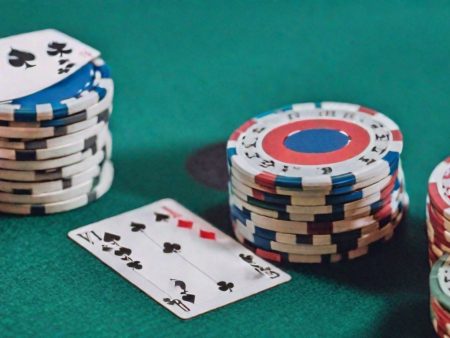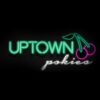A player’s wager placed into the pot during a game is called a bet. This action is one of the primary moves in all forms of poker. Bets serve to increase the pot’s size and determine which players continue in the hand. Proper betting is a cornerstone of successful poker strategy. Here’s a closer look at how to bet effectively in poker.
Betting Based on Your Objective
Defining your objective before placing a bet is a strategic move that helps players make informed decisions in various situations. Here’s how to identify your goal:
- Maximizing Winnings: If you hold a strong hand and are confident in its strength, your aim might be to build the largest pot possible. To do this, you act in ways that encourage opponents to raise further.
- Forcing Opponents to Fold: This strategy often involves bluffing. When your hand is weak but you want others to believe it’s strong, you place a bet high enough to make continuing unprofitable for them.
- Balancing Your Bet: To obscure the true strength of your hand, you might choose a balanced betting amount. This approach confuses opponents by making it unclear whether you’re holding a strong or weak hand.
- Protecting a Strong Hand: A larger bet can dissuade opponents from staying in the game, safeguarding your advantage.
- Minimizing Losses: When preservation is your priority, you can place the smallest bet possible, maintaining as many chips as you can.
Clearly defining your goal helps guide your interactions with opponents. A poker strategy should always adapt to the game’s current dynamics and the playing styles of your opponents, and setting a goal is a critical step in this process.
Read also: Who is a limper in poker.
Betting Based on Your Hand
In addition to your objective, the strength of your hand heavily influences your betting strategy.
- Strong Hands: With a strong hand, aim to maximize your winnings by placing larger bets. This increases the pot size, puts pressure on opponents, and boosts your chances of success.
- Average Hands: For medium-strength hands, your goal is to maintain balance. This involves creating a moderately sized pot, ensuring your bets align with your hand’s strength. A balanced approach keeps opponents guessing and reduces predictability.
- Weak Hands: When holding weak cards, focus on minimizing losses. Avoid large bets and, in many cases, consider folding to conserve chips.
Poker is a game of skill and strategy, and adjusting your betting based on hand strength is a fundamental aspect of achieving success.
Factors Influencing Bets
Understanding what a bet entails means recognizing its strategic role. Beyond objectives and hand strength, several other factors affect betting decisions. Notably, some online casinos offer generous bonuses that can influence betting outcomes by increasing potential winnings or offsetting losses.
- Table Structure: Pay attention to the cards on the table and how the betting unfolds. For instance, if high cards or potential strong combinations dominate the board, you may need to bet more aggressively.
- Opponent’s Playing Style: Adapt your strategy based on your opponents’ behavior. Against aggressive players who frequently bet, consider more raises or calls. Conversely, cautious or passive players may be susceptible to bluffs.
Tips from Professional Poker Players
Betting is pivotal in shaping the pot and controlling the game’s flow. It’s a tool for displaying aggression, bluffing, and maximizing winnings. Knowing when and how to bet is fundamental to effective poker strategy and a successful game.
- Vary Your Betting Style: To maintain unpredictability, avoid using the same bet sizes in identical situations. Changing your approach makes it harder for opponents to read your hand.
- Manage the Pot Size: Make small bets to entice opponents, or raise aggressively to apply pressure. However, overly small bets might give opponents a chance to improve their hands.
- Practice and Experience: Developing a strong betting strategy comes with time and practice. Regular gameplay enhances your ability to analyze situations, adapt to opponents, and control the pot effectively.
Read also: When to use an overbet in poker.
Basic Principles of Bet Sizing
Bet sizing is a critical component of poker strategy, influencing both the pot and opponents’ decisions. Here are some key principles:
- Dry and Uncoordinated Boards: On boards with minimal draw potential, smaller bets can be effective. They allow you to maintain control while maximizing value from strong hands.
- Draw-Heavy Boards: When the board features potential draws, larger bets help make continuing unprofitable for opponents, protecting your strong hands.
- Out-of-Position Play: Acting first after the flop often necessitates larger bets to compensate for positional disadvantage and maintain control of the hand.
- Opening Bets (Open-Raises): Typically, an opening bet equals three big blinds. This size protects your cards and builds the pot. A 3-bet, which triples the previous raise, demonstrates aggression and strength.
- 4-Bets and All-Ins: A 4-bet, often 2.3 times the previous raise, signals even greater strength. Betting for the big blind on the flop sets up an all-in opportunity on later streets, maximizing potential winnings with strong hands.
Mastering these principles helps refine your betting approach, but remember that every poker situation is unique. Adapting your bets to the specific context, opponents, and table dynamics is key. For those seeking a reliable platform, consider exploring licensed online casinos to ensure fair play and secure gaming. For more tips and insights into the gambling world, visit our blog. Want to learn more about gambling? Read the casino blog – expert tips, strategies, and game reviews are waiting for you!
FAQ: Betting in poker: how to place bets correctly
What is betting in poker?
Betting in poker refers to the act of placing chips or money into the pot during a hand. It’s a key component of the game that helps players build pots, protect hands, or bluff opponents.
How do you place a bet correctly in poker?
To place a bet correctly in poker, you must ensure it follows the game’s rules, is appropriate for the situation, and reflects the strength of your hand. The size of your bet should consider factors such as pot odds, position, and opponent behavior.
Why is bet sizing important in poker?
Bet sizing is crucial because it can influence your opponents’ decisions. A well-sized bet can protect your hand, build the pot when you have strong cards, or mislead your opponents into making mistakes.
What are the different types of bets in poker?
Common types of bets in poker include the call (matching the current bet), raise (increasing the bet), check (passing the action without betting), and fold (discarding your hand). Each type of bet has a specific purpose depending on your strategy.
How does position affect betting in poker?
Position in poker refers to where a player sits in relation to the dealer. Players who act later in the betting round have more information about their opponents’ actions and can make more informed bets. Being in a later position often allows for more aggressive betting strategies.
What are common mistakes players make when betting in poker?
Common mistakes include betting too much or too little, failing to vary bet sizes, or not adjusting bets based on the strength of your hand or your opponents’ tendencies. Over-betting or under-betting can give away information about your cards.
How can I improve my betting strategy in poker?
To improve your betting strategy, focus on understanding pot odds, evaluating hand strength, observing opponents' tendencies, and adjusting bet sizes according to the situation. Practice is key to developing a balanced and effective betting approach.






